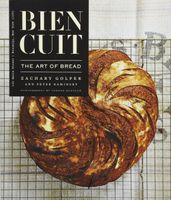Advertisement
Wheat
Appears in
By Zachary Golper and Peter Kaminsky
Published 2015
For most of us, wheat is bread and bread is wheat. Without wheat there would be no bread, or at least no bread as we know it. Even when a bread is made with other flours, the aroma that spreads through the house when a loaf is in the oven is first and foremost wheat, comforting as a favorite flannel shirt on a chilly day. It entices like the whiff of steak on the grill, onions caramelizing in a pan, or coffee beans fresh from the roaster. Its flavor is both sweet and savory in a way that few other foods are. But good bread is more than the allure of wheat. Equally important is texture, and only wheat can produce both the beautiful crust and light airy interior (crumb, in baker’s terms) of a loaf that both nourishes and delights. It’s true that all grains contain protein, but only wheat has the right amount of two key proteins, glutenin and gliadin, that combine to form gluten—the strands that create a network of air chambers, which form the crumb structure of bread. Water is all that’s required for glutenin and gliadin to come together and rearrange themselves in this way, enabling the baker to stretch dough as it’s prepared. When it’s baked, the gas released by fermentation inflates the gluten and—presto!—you have the architecture of the classic loaf of bread.



